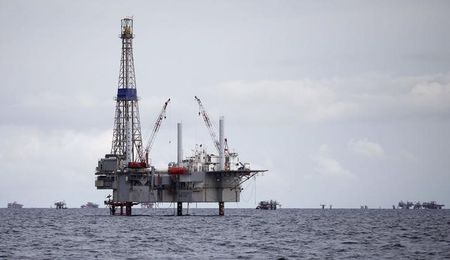Commodities
Oil rally pauses; Middle East, Hurricane Milton concerns remain

Investing.com — Oil prices fell Tuesday, hit by a degree of profit-taking after the worsening conflict in the Middle East drove strong gains through the past week.
At 08:05 ET (12:05 GMT), fell 2% to $79.30 a barrel, while fell 2.1% to $75.53 a barrel.
Both benchmark contracts rose more than 3% on Monday to their highest since late August, adding to last week’s rally of 8%, the biggest weekly gain in over a year.
Lack of new Chinese measures weigh
Weighing on the crude markets Tuesday was the lack of new stimulus measures from the Chinese authorities as the country returned from its week-long holiday.
China said on Tuesday it was “fully confident” of achieving its full-year growth target but refrained from introducing stronger fiscal steps, disappointing investors who had banked on more support for the economy.
Disappointment over the strength of the Chinese economic recovery has been on the main weights holding the crude market back, given China’s role as the world’s largest crude importer.
Fears of Middle East escalation persist
Fears of an escalation in the Middle East remained the biggest point of support for oil markets, as fighting between Israel and Hezbollah forces intensified this week. Hezbollah fired hundreds of missiles into Israeli territory on Monday, while Israel looked to increase its offensive against Lebanon.
This came after Iran fired scores of missiles against Israel last week, as retaliation for its offensives against Hamas and Hezbollah.
Monday marked a year since Hamas attacks against Israeli targets sparked a renewed war between the two, with the conflict showing few signs of deescalation.
Oil bulls bet that a worsening conflict will disrupt oil supplies from the Middle East, especially if Israel attacks Iran’s oil facilities.
Hurricane Milton in focus
Oil markets were also watching for the impact of Hurricane Milton on U.S. oil production, with the storm set to pass through the Gulf of Mexico before making landfall at the west coast of Florida this week.
While the hurricane is expected to miss most oil infrastructure in the Gulf of Mexico, several ports in the region were seen imposing restrictions, which could potentially disrupt oil shipments.
API crude inventories due
The latest U.S. crude oil inventory data, from the American Petroleum Institute, is due later in the session, and analysts expect stocks to rise by 1.9 million barrels in the week ended Oct. 4, according to a preliminary Reuters poll.
The official tally from the Energy Information Administration is scheduled for release on Wednesday.
(Ambar Warrick contributed to this article.)
Commodities
Oil prices rise; U.S. crude inventories plunge, Russia-Ukraine truce eyed
Commodities
India’s Reliance to stop buying Venezuelan oil over US tariffs, sources say
Commodities
Oil prices climb on Venezuela supply worries

 Forex3 years ago
Forex3 years agoForex Today: the dollar is gaining strength amid gloomy sentiment at the start of the Fed’s week

 Forex3 years ago
Forex3 years agoUnbiased review of Pocket Option broker

 Forex3 years ago
Forex3 years agoDollar to pound sterling exchange rate today: Pound plummeted to its lowest since 1985

 Forex3 years ago
Forex3 years agoHow is the Australian dollar doing today?

 Cryptocurrency3 years ago
Cryptocurrency3 years agoWhat happened in the crypto market – current events today

 World3 years ago
World3 years agoWhy are modern video games an art form?

 Commodities3 years ago
Commodities3 years agoCopper continues to fall in price on expectations of lower demand in China

 Economy3 years ago
Economy3 years agoCrude oil tankers double in price due to EU anti-Russian sanctions

























